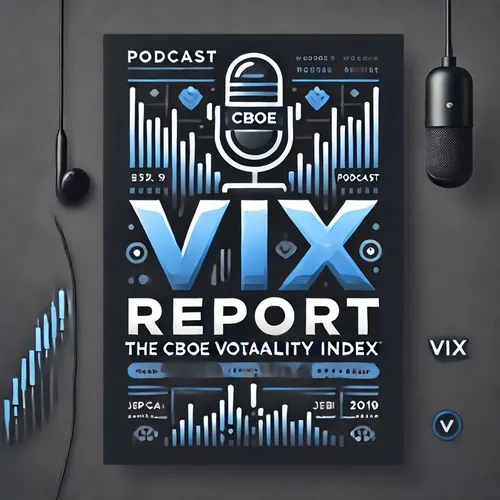"Market Volatility Eases as VIX Drops 7.96% Amid Economic Optimism"
- Author
- QP-1
- Published
- Tue 06 May 2025
- Episode Link
- https://www.spreaker.com/episode/market-volatility-eases-as-vix-drops-7-96-amid-economic-optimism--65935070
As of May 5, 2025, the Cboe Volatility Index (VIX) closed at 22.68, marking a notable reduction from the previous day's close of 24.60. This decline of approximately 7.96% underscores a significant shift in market sentiment, turning from heightened anxiety to a more stabilized outlook.
The VIX, often termed the "fear index," serves as a barometer for investors, gauging the market's expectations regarding future volatility. A high VIX reading typically signals elevated uncertainty or fear among investors, while a lower reading suggests increased confidence and market stability. As such, the recent decrease in the VIX can be interpreted as a signal that financial markets are currently experiencing reduced anxiety levels.
Several factors contribute to the fluctuation of the VIX, with market sentiment playing a pivotal role. Economic indicators, such as the Institute for Supply Management (ISM) services index, have recently painted a more optimistic picture of the economic landscape. The unexpected increase in the US April ISM services index has alleviated some recession fears, possibly influencing the VIX's downward trajectory. This positive economic data can lead to a more confident market outlook, thereby lowering the VIX as immediate threats to economic stability seem diminished.
In addition to domestic economic indicators, global events can heavily influence the VIX. Geopolitical developments, specifically those concerning trade relations, often inject uncertainty into markets. Recent comments and actions surrounding trade policies, particularly involving China, have historically caused fluctuations in market volatility. Despite the potential for these issues to stir uncertainty, the market's current focus appears to be shifting towards recovery and stability, as reflected in the VIX's latest movements.
Commodity prices also hold sway over market sentiment and can impact the VIX. A recent dip in WTI crude oil prices, influenced by decisions from OPEC+ to adjust supply levels, is an example of how commodity markets can affect broader economic indicators. Fluctuations in oil prices can impact sectors reliant on energy costs, influencing investor sentiment and market stability.
Currently, the VIX's downward trend suggests a calming of investor nerves, potentially driven by the recovery of stock indexes from prior lows and reassuring economic updates. The decline in the VIX is indicative of a market adjusting to a more favorable risk environment, possibly spurred on by robust economic data and a moderation in global uncertainties.
In conclusion, the VIX at 22.68 as of May 5, 2025, after a
